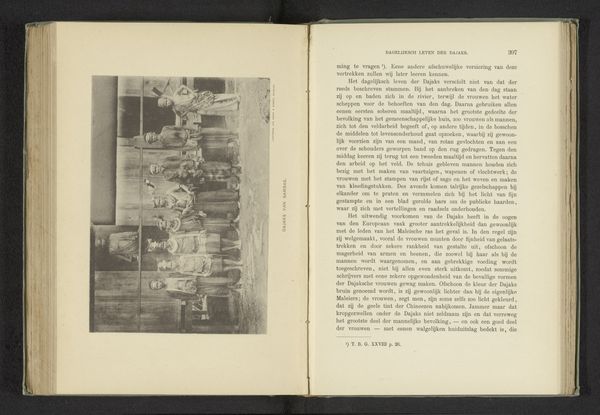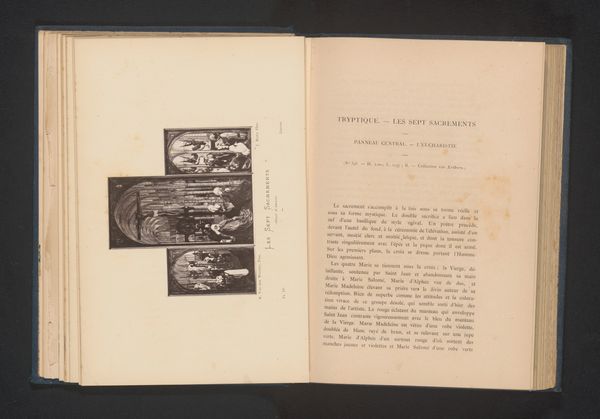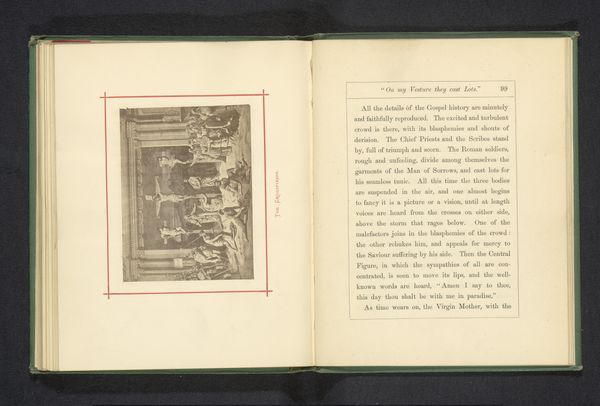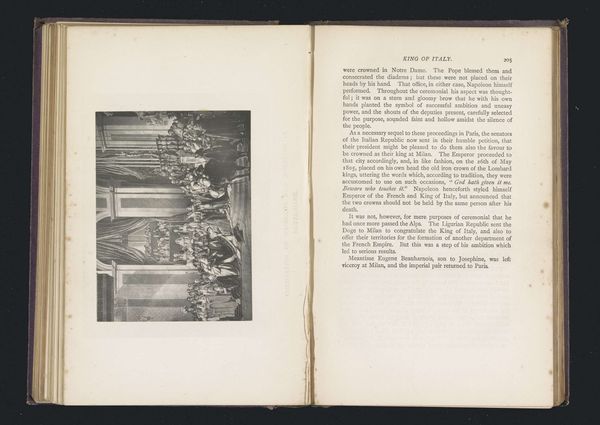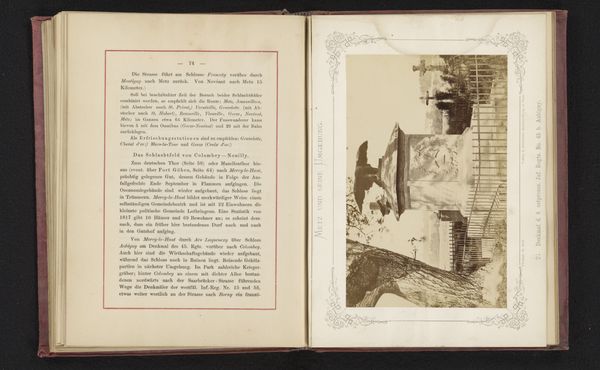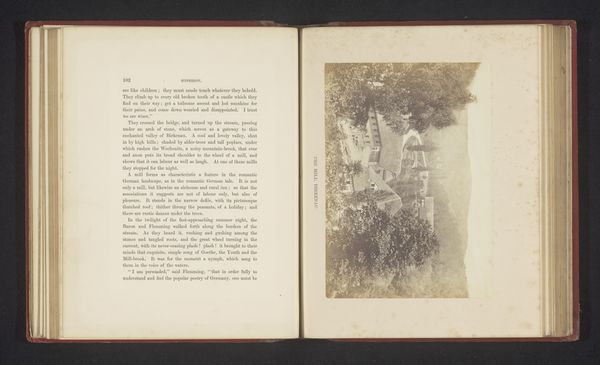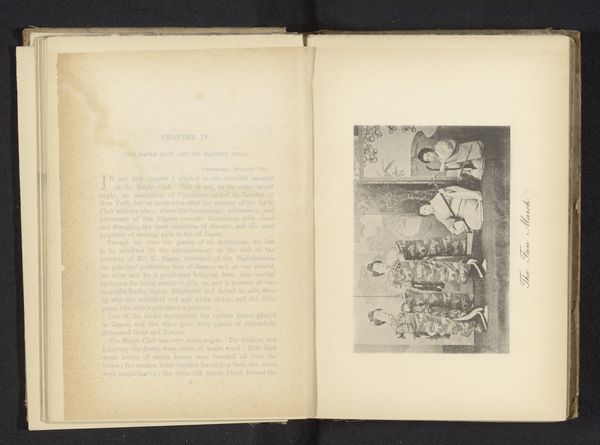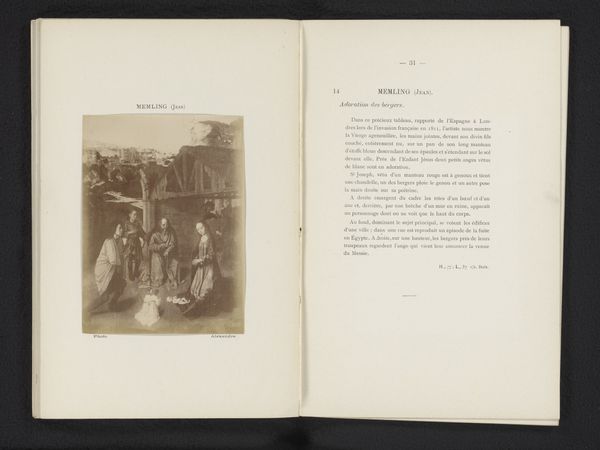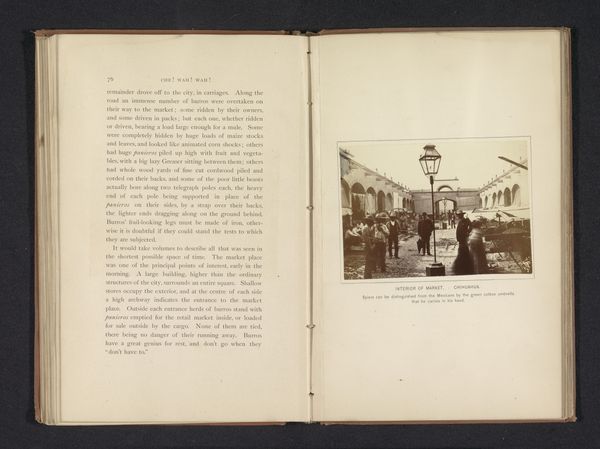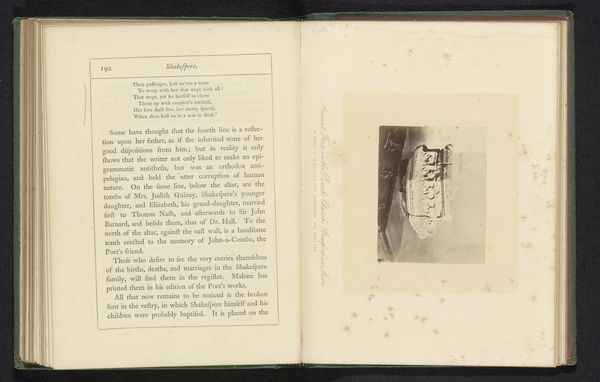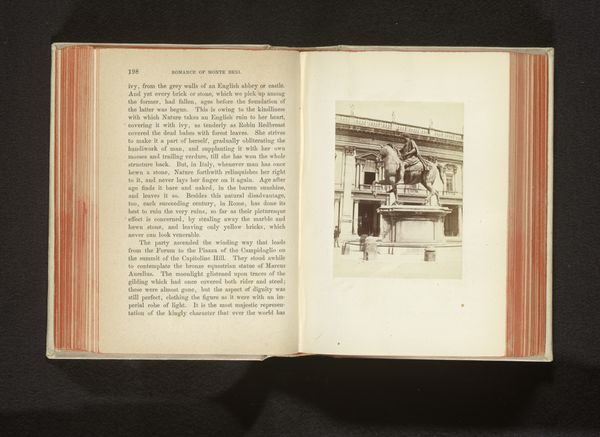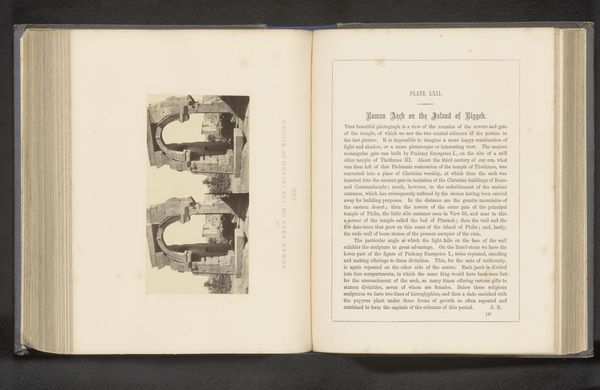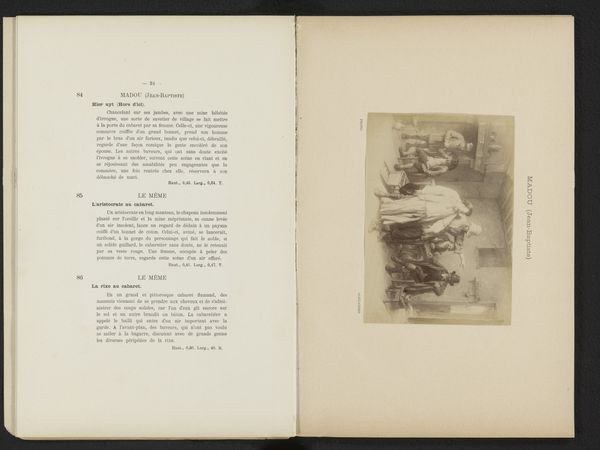
Fotoreproductie van een schilderij van een tafel met daarop resten van een feest door Willem Linnig (II) before 1896
0:00
0:00
painting, print, oil-paint, photography
#
dutch-golden-age
#
painting
# print
#
oil-paint
#
photography
#
genre-painting
#
watercolor
Dimensions: height 120 mm, width 171 mm
Copyright: Rijks Museum: Open Domain
Curator: What we have here is a reproduction of a painting titled "Fotoreproductie van een schilderij van een tafel met daarop resten van een feest" by Willem Linnig II, created before 1896. Editor: Immediately, there's this feeling of… aftermath. It's somber, almost melancholic, despite supposedly depicting a celebration. The monochrome quality definitely contributes to that mood. Curator: Given that it is labeled as a genre painting reproduced as a photograph of an oil painting, I think exploring how reproduction and distribution shaped the audience's experience is crucial. The materiality shifts radically. The photographic print flattens the textures inherent in oil paint. Editor: But that flattening can also highlight different iconographic details. Think about the significance of leftovers. They're potent symbols, right? Evidence of indulgence, of shared experience, but also of absence and the passage of time. We’re drawn to remnants precisely because the celebratory moment is over. Curator: Precisely! Consider how easily these scenes were distributed in print compared to, say, a commissioned history painting available only to those who could view the original. Linnig democratized access. But he also reduced art, fundamentally, to a form of commodity easily and widely distributed. Editor: True, but the symbols persist regardless. In art history and even now, the depiction of remnants evokes memento mori, perhaps even an association with vanity and temporal pleasures. These symbolic gestures translate well, and gain further exposure through new media. Curator: I suppose from a material perspective, this speaks to how art objects are constantly circulated in capitalist exchange and experienced beyond original intent. This photography reproduced an already symbolic scene into a flattened and portable experience that further enhanced its value through its expanded reach to larger audiences. Editor: I find it really striking to think of how these older visual emblems maintain relevancy today. Their durability reflects the human obsession with time and memory, accessible to all and not exclusive to social or political powers. Curator: Interesting points! Seeing the interaction between its value as material good versus visual symbol provides two distinct yet connected narratives here. Editor: I quite agree. Hopefully this small overview into how those elements meet deepens engagement and appreciation!
Comments
No comments
Be the first to comment and join the conversation on the ultimate creative platform.

